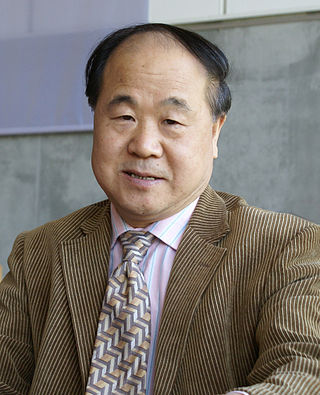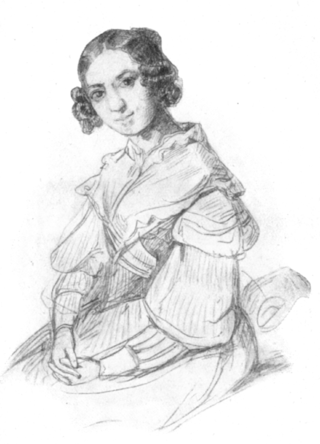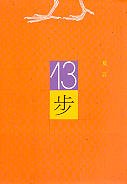Related Research Articles

The Western canon is the body of high-culture literature, music, philosophy, and works of art that are highly valued in the West; works that have achieved the status of classics. However, not all these works originate in the Western world, and such works are also valued throughout the globe. It is "a certain Western intellectual tradition that goes from, say, Socrates to Wittgenstein in philosophy, and from Homer to James Joyce in literature".

Baroness Anna Elisabeth Franziska Adolphine Wilhelmine Louise Maria von Droste zu Hülshoff, known as Annette von Droste-Hülshoff, was a 19th-century German poet, novelist, and composer of Classical music. She was also the author of the novella Die Judenbuche.

Doris May Lessing was a British novelist. She was born to British parents in Iran, where she lived until 1925. Her family then moved to Southern Rhodesia, where she remained until moving in 1949 to London, England. Her novels include The Grass Is Singing (1950), the sequence of five novels collectively called Children of Violence (1952–1969), The Golden Notebook (1962), The Good Terrorist (1985), and five novels collectively known as Canopus in Argos: Archives (1979–1983).
Magic realism or magical realism is a style of literary fiction and art. It paints a realistic view of the world while also adding magical elements, often blurring the lines between fantasy and reality. Magic realism often refers to literature in particular, with magical or supernatural phenomena presented in an otherwise real-world or mundane setting, commonly found in novels and dramatic performances. Despite including certain magic elements, it is generally considered to be a different genre from fantasy because magical realism uses a substantial amount of realistic detail and employs magical elements to make a point about reality, while fantasy stories are often separated from reality. Magical realism is often seen as an amalgamation of real and magical elements that produces a more inclusive writing form than either literary realism or fantasy.

Gao Xingjian is a Chinese émigré and later French naturalized novelist, playwright, critic, painter, photographer, film director, and translator who in 2000 was awarded the Nobel Prize in Literature "for an oeuvre of universal validity, bitter insights and linguistic ingenuity." He is also a noted translator, screenwriter, stage director, and a celebrated painter.

Kenzaburō Ōe was a Japanese writer and a major figure in contemporary Japanese literature. His novels, short stories and essays, strongly influenced by French and American literature and literary theory, deal with political, social and philosophical issues, including nuclear weapons, nuclear power, social non-conformism, and existentialism. Ōe was awarded the 1994 Nobel Prize in Literature for creating "an imagined world, where life and myth condense to form a disconcerting picture of the human predicament today".

Guan Moye, better known by the pen name Mo Yan, is a Chinese novelist and short story writer. Donald Morrison of U.S. news magazine TIME referred to him as "one of the most famous, oft-banned and widely pirated of all Chinese writers", and Jim Leach called him the Chinese answer to Franz Kafka or Joseph Heller. In 2012, Mo was awarded the Nobel Prize in Literature for his work as a writer "who with hallucinatory realism merges folk tales, history and the contemporary".

Herta Müller is a Romanian-German novelist, poet, essayist and recipient of the 2009 Nobel Prize in Literature. She was born in Nițchidorf, Timiș County in Romania; her native language is German. Since the early 1990s, she has been internationally established, and her works have been translated into more than twenty languages.

The Aesthetics of Resistance is a three-volume novel by the German-born playwright, novelist, filmmaker, and painter Peter Weiss which was written over a ten-year period between 1971 and 1981. Spanning from the late 1930s into World War II, this historical novel dramatizes anti-fascist resistance and the rise and fall of proletarian political parties in Europe. It represents an attempt to bring to life and pass on the historical and social experiences and the aesthetic and political insights of the workers' movement in the years of resistance against fascism.

The Nobel Prize in Literature is a Swedish literature prize that is awarded annually, since 1901, to an author from any country who has, in the words of the will of Swedish industrialist Alfred Nobel, "in the field of literature, produced the most outstanding work in an idealistic direction". Though individual works are sometimes cited as being particularly noteworthy, the award is based on an author's body of work as a whole. The Swedish Academy decides who, if anyone, will receive the prize. The academy announces the name of the laureate in early October. It is one of the five Nobel Prizes established by the will of Alfred Nobel in 1895. Literature is traditionally the final award presented at the Nobel Prize ceremony. On some occasions the award has been postponed to the following year, most recently in 2018 as of July 2023.
Droste-Preis is a literary prize awarded in Baden-Württemberg, Germany. The city of Meersburg awards the Droste Prize in memory of the writer Annette von Droste-Hülshoff, who spent the last years of her life in Meersburg. It is awarded every three years. The award is endowed with €6,000. The award is given only to women.
Ernst Meister was a German poet and writer.

Luise Adelaide Lavinia Schopenhauer, known as Adele Schopenhauer, was a German author. She was the sister of the philosopher Arthur Schopenhauer and daughter of author Johanna Schopenhauer. Henriette Sommer and Adrian van der Venne were pseudonyms used by her.

Thirteen Steps is a novel by Nobel prize-winning author Mo Yan. It first appeared in 1988 in the literary magazine Wenxue si ji. It later appeared in book form in April 1989.

The Morgenblatt für gebildete Stände was a German cultural and literary journal that existed from 1807 to 1865. It appeared daily until 1851, when it was changed to a weekly journal. The Morgenblatt was published by Cotta in Tübingen and later in Stuttgart, and was the most important German literary and cultural journal of its time.

Friedrich Castelle, was a Völkischer Nationalismus journalist and writer and party member of the NS regime.

Emil Staiger was a Swiss historian, writer, Germanist and Professor of German Studies at the University of Zurich.

The 2014 Nobel Prize in Literature was awarded to the French novelist Patrick Modiano "for the art of memory with which he has evoked the most ungraspable human destinies and uncovered the life-world of the occupation." He became the 15th Frenchman to receive the Nobel Prize for Literature after J. M. G. Le Clézio in 2008.

The 2012 Nobel Prize in Literature was awarded to the Chinese writer Mo Yan "who with hallucinatory realism merges folk tales, history and the contemporary." He is the second Chinese author to win the prize after the exiled Gao Xingjian.

The 2000 Nobel Prize in Literature was awarded to the Chinese émigré writer Gao Xingjian "for an æuvre of universal validity, bitter insights and linguistic ingenuity, which has opened new paths for the Chinese novel and drama." He is the first Chinese recipient of the prize followed by Mo Yan in 2012.
References
- 1 2 Harold Osborne (ed.). The Oxford Companion to Twentieth Century Art. p. 529.
- ↑ Larry D. Wells (January 1975). "Annette von Droste-Hülshoff: Werk und Leben by Clemens Heselhaus. Review by: Larry D. Wells". The German Quarterly. 48 (1): 101–103. doi:10.2307/403458. JSTOR 403458.
- ↑ Elisabeth Krimmer (2001). "A Perfect Intimacy with Death: Death, Imagination, and Femininity in the works of Annette von Droste-Hülshoff". Women in German Yearbook. 17: 132. doi:10.1353/wgy.2001.0006. JSTOR 20688927. S2CID 144030425.
- 1 2 3 Burkhardt Lindner (Autumn 1983). "Hallucinatory Realism: Peter Weiss' Aesthetics of Resistance, Notebooks, and the Death Zones of Art". New German Critique. Duke University Press. 30 (30): 127–156. doi:10.2307/487836. JSTOR 487836.
- ↑
- "Chinese author Mo Yan wins Nobel Prize for Literature". BBC News. 11 October 2012. Retrieved 11 October 2012.
- "Chinese writer Mo Yan wins Nobel prize". The Irish Times. 11 October 2012. Retrieved 11 October 2012.
- "Chinese writer Mo Yan wins 2012 Nobel Prize in Literature". Xinhua. 11 October 2012. Retrieved 11 October 2012.
- Mason, Paul (11 October 2012). "Mo Yan's storytelling is as surreal as China". The Guardian. Retrieved 11 October 2012.
- ↑ "The Nobel Prize in Literature 2012 - Press Release". Nobelprize.org. 12 October 2012.
- ↑ "Nobelpriset i litteratur år 2012 - Pressmeddelande". Nobelprize.org (in Swedish). Nobel Media. 2012-10-11. Retrieved 13 September 2013.
- ↑ video
- ↑ Press, Joy (Nov 4, 2003). "My Little Phony". The Village Voice.
- ↑ Catherine Russel (2003). Ivone Margulies (ed.). Ecstatic Ehnography: Maya Deren and the Filming of Possession Rituals. Rites of Realism: Essays on Corporeal Cinema. Duke University Press. p. 270. ISBN 9780822330660 . Retrieved 13 September 2013.
- ↑ Burkhardt Lindner; Luke Springman; Amy Kepple (Autumn 1983). "Hallucinatory Realism: Peter Weiss' Aesthetics of Resistance, Notebooks, and the Death Zones of Art". New German Critique (30): 127–156. doi:10.2307/487836. JSTOR 487836.
- ↑ Serge Jongué (Autumn 1981). "Le réalisme hallucinatoire de Tomi Ungerer". Vie des Arts. 26, numéro 104: 42–44.
- ↑ Catherine Rosario (2 November 2000). "Pier Paolo Pasolini's Gospel According to St. Matthew". Suite101. Retrieved 13 September 2013.
- ↑ Bresnick, Adam (October 13, 2002). "Burn, baby, burn". Los Angeles Times. Retrieved 13 September 2013.